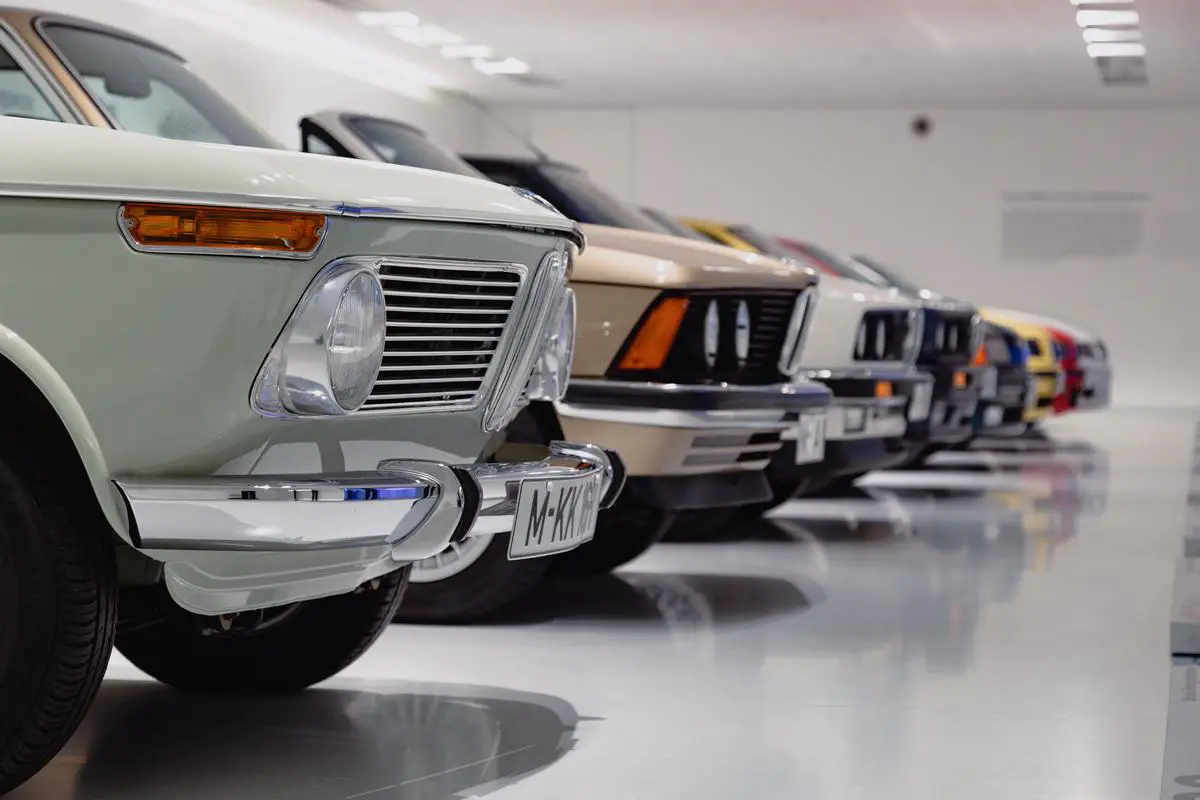Driving into the Future: How AI is Revolutionizing the Auto Industry
In the fast-paced world of the 21st century, technology is advancing at an unprecedented speed, and with it, the future of the automobile industry is rapidly evolving. At the forefront of this revolution is the integration of Artificial Intelligence (AI) that’s broadening horizons and providing a wide range of possibilities for automakers and consumers alike. From significantly enhancing the manufacturing process to spearheading autonomous driving, AI has taken up a central role in the evolution of the automotive world. Furthermore, AI-powered in-car features and personalization are redefining what it means to own and operate a vehicle, paving the way for a unique user experience molded by individual habits and preferences.
The Integration of AI in Auto Manufacturing
AI in Auto Manufacturing
Artificial Intelligence (AI) is swiftly altering the face of the automotive industry, particularly in manufacturing processes. AI empowers factory automation, with its algorithms enabling machines to carry out tasks that were traditionally performed by humans but with greater precision and speed.
Precision Welding and Assembly with AI
One of the major applications of AI in car manufacturing is in precision welding and assembly. Robots equipped with AI technology are used to perform precise welding tasks, which are usually complex and challenging for humans to perform consistently. Take Tesla, the electric vehicle giant, for example, it uses AI-powered robots for spot welding to attach different parts of a vehicle together. These robots not only do the job with better accuracy but also at a faster rate, leading to increased production and high-quality results.
Meanwhile, General Motors has been leveraging AI in the assembly of automobile parts. In complex assembly lines, AI assists in determining the sequence in which parts should be assembled for optimal efficiency and accuracy.
Paint Customization with AI
Artificial Intelligence has also found considerable use in the paint customization process. Increasingly, car manufacturers are using AI technologies to customize vehicle paints based on specific customer demands. Ford, for instance, has implemented AI-based systems that accurately mix paint colors based on customer specifications. These systems can replicate virtually any color with precision and can also optimize the paint application process to prevent waste and ensure the smoothness of the final paint job.
Quality Control Inspection and AI
AI is playing a significant role in quality control inspection within the auto industry. Companies like BMW are using AI to visually inspect components for tiny defects that might be missed by the human eye. AI can quickly scan thousands of parts per minute and analyze patterns, recognizing any abnormalities or defects that could indicate a problem.
Additionally, AI is being used to inspect finished vehicles for any potential issues before they leave the factory. Machine learning algorithms are tuned to detect even the most minute deviations from the standard, ensuring high quality and reducing the risk of post-production issues.
Conclusion
Wrapping it up, Artificial Intelligence (AI) is reshaping the automotive industry through innovative applications in manufacturing processes. AI-enhanced precision, assembly, paint customization, and quality control are driving efficiency, boosting output, and improving product quality in vehicles. Some of the biggest names investing in AI for manufacturing include Tesla, General Motors, Ford, and BMW. With progressive development in AI technologies, their integration within the auto industry is expected to grow, enhancing operations and effectiveness even further. In no uncertain terms, AI is set to significantly shape the future of the automotive industry.

AI and Autonomous Driving: An Emerging Reality
The Mechanics of Self-Driving Cars.
At the crux of impressive self-driving car technology lies the handiwork of Artificial Intelligence (AI). This autonomic technology can be viewed as associating cars with high-performance computers for autonomous functions. The vehicle is fitted with sensors and cameras that feed data into this computer for processing, supported by AI models. This mechanism employs machine learning algorithms to handle this data, identifying patterns and making decisions for a suitable course of action depending on the situation at hand.
The AI-powered tech relies on Lidar (Light Detection and Ranging) and Radar (Radio Detection and Ranging) to help cars understand their surroundings. Lidar uses lasers to send out light beams and reads their reflections for determining distance and shape of objects, whereas Radar makes use of radio waves to discern the speed and range of objects. The culmination of this data processing equips the car with the ability to navigate routes, recognize traffic signs and signals, steer clear of obstacles, and respond aptly to varied road conditions.
AI’s Role in Road Safety and Traffic Control.
One of the potential benefits of AI technology in self-driving cars is significantly improving road safety. As AI isn’t susceptible to human flaws such as distractions or fatigue, the technology’s response time to road situations is infinitely quicker than a human driver’s would be. Moreover, AI self-learning capabilities mean that the technology can constantly improve its performance, contributing to the development of safer driving systems.
AI also promises to optimize traffic control by promoting a smoother traffic flow. Autonomous vehicles can communicate with each other, reducing traffic congestion by synchronizing braking and accelerating actions. Additionally, AI can manage dynamic traffic light timing, helping to mitigate situations that may lead to traffic congestion.
Regulations and Laws on Autonomous Vehicles.
While the advancement of AI and autonomous technology is promising, it also presents a new set of challenges regarding regulations and laws. In the United States, while individual states can legislate on driverless car operations, the federal government oversees motor vehicle standards. As of October 2021, the U.S. Department of Transportation and the National Highway Traffic Safety Administration (NHTSA) have laid out comprehensive guidelines for the safe testing and integration of self-driving vehicles on public roads. Nonetheless, there isn’t a national policy yet, and regulations differ from state to state, signifying a key area for future policymaking as autonomous technologies evolve.
Ai in the Automotive Industry: Public Perceptions and Reality
Artificial Intelligence (AI) in the automotive industry, particularly in self-driving vehicles, has been met with a blend of acceptance and skepticism. A 2020 survey by the Pew Research Center discovered that only 48% of Americans felt positive about the development of autonomous vehicles. This mixed sentiment can largely be traced back to worries about safety, distrust in the unfamiliar technology, and fears over job loss in the transport sector. As the evolution of AI continues to reveal more clear-cut benefits, it is anticipated that people’s sentiment may gradually adjust towards a more favorable viewpoint.

AI Powered In-Car Features and Personalization
Utilizing AI for Enhanced In-Car Features and Personalization
As the connectivity of vehicles increases, AI’s role in the automotive industry grows alongside it, improving the overall safety and convenience of modern cars through various in-car features.
Among the most notable applications of AI in vehicles today is voice assistance. Much like virtual aids like Siri and Alexa, in-car voice assistance allows drivers to easily manage their vehicle’s functions without using their hands— ranging from adjusting temperature, choosing music, making calls, to sending text messages. By leveraging natural language processing, these AI-driven voice assistants can accurately interpret and execute driver’s commands, subsequently reducing possible distractions and boosting safety.
AI has also revolutionized GPS systems, providing not just navigational support but real-time traffic updates and options for rerouting to avoid traffic congestion. Utilizing collected data on common destinations, AI can even suggest the most efficient routes before you start your trip.
Entertainment in vehicles has also been transformed through AI. Personalized in-car entertainment systems, powered by AI, offer real-time song, podcast, or audiobook recommendations based on driver or passenger preferences. These systems can dynamically adjust to suit different users, significantly enhancing the driving experience.
Predictive maintenance is another critical area where AI has delivered substantial results. Sensors located around the vehicle continually gather data, and machine learning algorithms analyze this data to predict potential component failures and maintenance requirements. This proactive approach helps to nip issues in the bud, saving both time and money by preventing minor problems from escalating to serious complications.
Revolutionizing the Car Industry: The Impact of AI on User Experience
The integration of Artificial Intelligence (AI) in vehicular technology dramatically improves the driving experience. By analyzing user behavior and preferences, AI can personalize various car settings, such as seat positioning, temperature control, and side-mirror adjustments, for individual drivers.
It’s not just about remembering preferred GPS destinations or favorite tunes; the AI can also understand how a driver reacts to different traffic situations. This ongoing learning process enables vehicles to provide a personalized, unique driving experience.
With advances in machine learning and AI, we are now witnessing the emergence of even more sophisticated features. Semi-autonomous driving, for example, allows the car to assume control under certain circumstances. These smart systems can detect if a driver is experiencing fatigue or stress and suggest taking a break or even handle driving if needed.
In summary, AI is reshaping the automotive landscape by introducing innovative features that enhance user experiences. As technology keeps evolving, the incorporation of AI in vehicles is expected to accelerate, resulting in smarter, safer, and highly personalized cars in the future.

Impacts and Implications of AI on the Car Industry’s Future
The Double-edged Sword: AI in Job Creation and Displacement within the Car Industry
Along with disrupting the way we drive, AI is also redefining employment within the automotive industry. New positions centered around AI knowledge, such as data scientists, AI developers, and automation specialists, have sprung up. Both tech giants and car manufacturers are on a constant lookout for professionals with these capabilities to drive progress in autonomous driving, predictive maintenance, and streamlined manufacturing.
However, the rise of AI also comes with its challenges. As AI automates more processes, traditional roles are at risk of becoming obsolete. Positions such as assembly line workers and quality control inspectors are among those prone to automation. Moreover, as self-driving technology grows more prevalent, some driving-related occupations face potential displacement too.
Changes in Car Ownership due to AI
AI is also influencing changes in car ownership. With the advent of AI-powered autonomous vehicles, the need for personal vehicle ownership may diminish. Today, ride-sharing services like Uber and Lyft are increasingly popular, and with the rise of autonomous cars, these services could become even more cost-effective and convenient.
Evidence of this shift is already visible. According to a recent study by the Transport Systems Catapult in UK, car ownership is expected to significantly drop as autonomous vehicles and mobility as a service (MaaS) become mainstream. By offering convenient, flexible, and affordable transportation options, AI-powered vehicles and MaaS could change the concept of car ownership entirely.
The Automotive Industry’s Approach to Sustainability and Emissions
AI is central to the automotive industry’s push towards a sustainable future. It plays a significant role in reducing carbon emissions by optimizing engine efficiency and advancing electric and hybrid technologies. For instance, AI algorithms can analyze driving patterns and adapt a vehicle’s performance for optimal fuel economy.
In addition, AI can play a pivotal role in the manufacturing process by predicting and managing energy consumption in real-time, reducing the overall carbon footprint of producing a car. Also, AI can help automate recycling practices in the industry, promoting a more circular economy.
Ethical Considerations in AI Adoption
As with any disruptive technology, AI brings in a host of ethical challenges. These include issues of privacy and data security, particularly with connected vehicles collecting and transmitting vast amounts of user data. This raises questions about who owns and can access this data.
Another major ethical concern is how self-driving cars will make decisions in life-threatening situations. Decision-making algorithms need to be meticulously designed and tested to ensure that they can handle a wide range of scenarios.
Furthermore, AI’s capacity to replace human jobs in the automotive industry brings about socio-economic implications that warrant thoughtful debate and policy-making. As AI becomes more integrated within the auto industry, ethical considerations will continue to be at the forefront. How these considerations are handled will significantly define the future trajectory of AI in the sector.

Through the lens of Artificial Intelligence, the automobile industry stands on the threshold of a monumental transformation. As AI technology continues to sustain its momentum, the industry could potentially herald a new era of efficiency in production, superior user experience, and possibly even safer roads, thanks to autonomous vehicles. However, this shift will not be without its fair share of challenges. The potential displacement of jobs, changes in car ownership paradigms, and ethical considerations are critical facets that will have to grapple with the AI-driven reality. Still, as the automobile industry learns to evolve and innovate alongside AI, one thing remains certain – the road ahead is undeniably exciting, filled with endless potentialities and is set to shape a future where driving is more than just getting from one place to another.
Writio – The AI Content Writer for website publishers and blogs. Get high quality articles with images written by Writio. This article was written by Writio.
